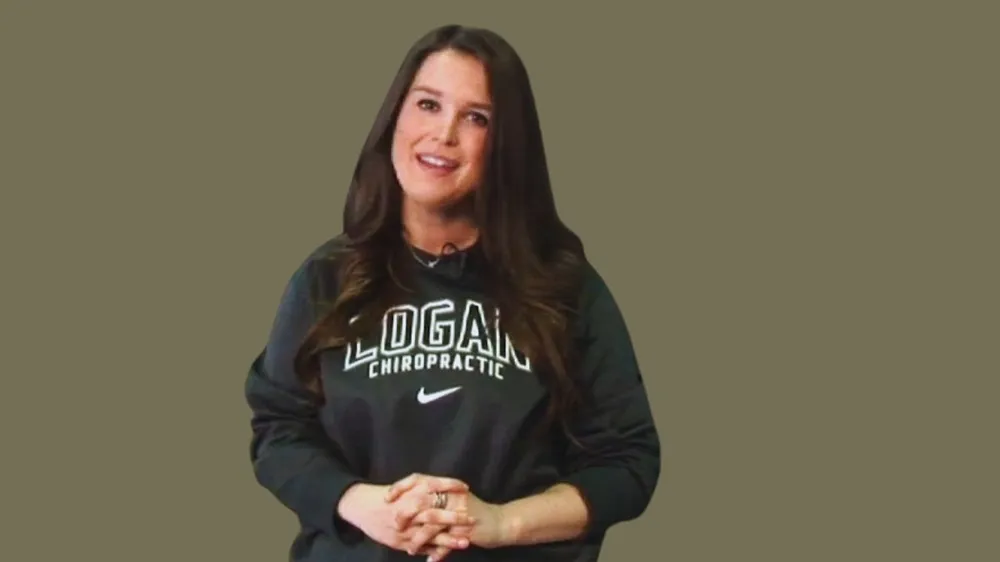Lifestyle
Unlocking the Symbolism: Men’s Tattoo Meanings Revealed

Tattoos have been an integral part of human culture for centuries, serving as symbols of identity, status, and personal expression. In recent years, tattoos have become increasingly popular among men, with each design often holding deep and personal meanings. From ancient symbols to modern motifs, tattoos serve as a canvas for storytelling and self-expression. In this article, we’ll explore the symbolism behind men’s tattoos, revealing the hidden meanings and cultural significance behind these powerful forms of body art.
Tribal Tattoos:
Tribal tattoos are among the oldest and most widespread forms of tattooing, originating from indigenous cultures around the world. These tattoos often feature intricate geometric patterns, bold lines, and abstract designs inspired by tribal art and symbolism. Tribal tattoos hold various meanings depending on the culture and context in which they are created, but they often symbolize concepts such as strength, courage, ancestry, and spiritual connection.
For example, Polynesian tribal tattoos, such as Maori and Samoan designs, often depict ancestral symbols and motifs that represent the wearer’s lineage, social status, and personal achievements. These tattoos are deeply ingrained in Polynesian culture and serve as a form of cultural identity and pride.
Religious and Spiritual Tattoos:
Religious and spiritual tattoos are prevalent among men of diverse faiths and beliefs, serving as expressions of devotion, faith, and reverence. These tattoos often feature religious symbols, sacred imagery, and inspirational quotes or verses drawn from religious texts. Religious tattoos can hold deeply personal meanings for the wearer, serving as reminders of their spiritual journey and beliefs.
Christian tattoos may feature symbols such as crosses, angels, and biblical verses, while Buddhist tattoos may incorporate images of the Buddha, lotus flowers, and sacred mantras. Hindu tattoos often feature depictions of deities such as Ganesha, Shiva, and Krishna, as well as symbols such as the Om symbol and the lotus.
Cultural and Heritage Tattoos:
Cultural and heritage tattoos celebrate the wearer’s cultural identity, ancestry, and heritage, serving as symbols of pride and connection to one’s roots. These tattoos often incorporate traditional symbols, motifs, and imagery drawn from the wearer’s cultural background, whether it be Celtic, Norse, African, or Indigenous.
For example, Celtic tattoos may feature intricate knotwork, spirals, and animal motifs inspired by Celtic art and mythology, while Norse tattoos may depict symbols such as the Valknut, Mjolnir (Thor’s hammer), and runes. African tattoos may incorporate symbols from traditional African cultures such as Adinkra symbols from Ghana or tribal motifs from various African tribes.
Personal and Inspirational Tattoos:
Many men choose to get tattoos that hold personal significance and meaning, serving as reminders of important milestones, experiences, or values. These tattoos can range from meaningful quotes and phrases to symbolic imagery that represents aspects of the wearer’s life, personality, or aspirations.
For example, tattoos of loved ones’ names, birthdates, or portraits serve as permanent tributes to cherished relationships and memories. Inspirational tattoos may feature motivational quotes, affirmations, or symbols that inspire and empower the wearer to overcome challenges and pursue their goals.
Pop Culture and Artistic Tattoos:
Pop culture and artistic tattoos draw inspiration from various forms of media, including movies, music, literature, and visual art. These tattoos often feature iconic symbols, characters, or imagery from popular culture, serving as tributes to beloved franchises, artists, or works of art.
For example, tattoos inspired by comic books may feature characters such as Superman, Batman, or Spider-Man, while tattoos inspired by movies may depict scenes, quotes, or symbols from cult classics or blockbuster films. Artistic tattoos may incorporate elements of contemporary art movements such as surrealism, abstract expressionism, or street art, showcasing the wearer’s appreciation for artistic creativity and innovation.
Conclusion:
Men’s tattoos are not merely ink on skin; they are powerful symbols of identity, culture, and personal expression. From ancient tribal designs to modern pop culture references, each tattoo tells a story and holds deep meaning for the wearer. By understanding the symbolism behind men’s tattoos, we can gain insight into the diverse and rich tapestry of human experience and creativity. Whether chosen for their cultural significance, religious symbolism, personal significance, or artistic expression, tattoos serve as enduring testaments to the wearer’s values, beliefs, and individuality.

Lifestyle
Ski Bri Net Worth – How Much Is Sky Bri Worth in 2024?

Alright, let’s talk about Ski Bri net worth. You know, that social media queen who’s been blowing up your TikTok feed? Yeah, her. If you’ve ever wondered, “How much is Sky Bri worth?”—you’re not alone. By 2024, her net worth is sitting pretty in the
2to
2to3 million range. But how did she get there? Let’s break it down, human-style.
Who Is Ski Bri? (And Why Should You Care?)
First things first—who even is Ski Bri? Real name: Sky Brianna. She’s a social media influencer, model, and content creator who’s basically the poster child for turning likes into dollars. You’ve probably seen her on Instagram, TikTok, or YouTube, serving looks and dropping relatable content like it’s her job. (Spoiler: it is.)
Early Life and Career Beginnings
Ski Bri grew up in the U.S., and like most of us, she started small. Think awkward teen photos and cringe-worthy captions. But here’s the thing—she had a knack for fashion and beauty. By her late teens, she was posting on Instagram, and people actually cared. Like, a lot. Her follower count shot up faster than my anxiety during a Wi-Fi outage.
Rise to Fame
Fast forward past three failed attempts at going viral (we’ve all been there), and Ski Bri hit the jackpot with TikTok. Her short, snappy videos were the perfect mix of personality and polish. Then came YouTube—vlogs, beauty tutorials, and the kind of lifestyle content that makes you question your life choices. Suddenly, she wasn’t just another influencer; she was the influencer.
Ski Bri Net Worth in 2024: The Breakdown
Alright, let’s get to the good stuff. Ski Bri net worth in 2024? Somewhere between
2millionand
2millionand3 million. Not too shabby for someone who probably spends half her day filming herself eating avocado toast. But where’s all that cash coming from? Let’s dive in.
Income Sources
- Social Media Earnings: This is her bread and butter. With millions of followers across Instagram, TikTok, and YouTube, Ski Bri rakes in serious cash from sponsored posts, brand deals, and ad revenue. One viral TikTok? Cha-ching.
- Brand Partnerships: Ski Bri’s got brands lining up to work with her. Fashion, beauty, lifestyle—you name it, she’s probably promoting it. These deals aren’t just lucrative; they’re also a major flex.
- Merchandise Sales: Yep, she’s got merch. From hoodies to phone cases, her fans can’t get enough. It’s like owning a piece of the Ski Bri empire—or at least a $40 T-shirt.
- YouTube Revenue: Her YouTube channel is a goldmine. Millions of views mean serious ad dollars, plus sponsorships and affiliate marketing. Basically, every time you click, she gets paid.
- Modeling and Appearances: Ski Bri’s not just a screen star. She’s done modeling gigs and made appearances at events, adding another stream to her income river.
What Makes Ski Bri’s Net Worth So Impressive?
Here’s the kicker: Ski Bri didn’t just stumble into this wealth. She worked for it. Hard. Here’s what sets her apart:
- Consistency: She’s always posting, always engaging. Rain or shine, she’s there, serving content like it’s her last meal.
- Diversification: Ski Bri doesn’t put all her eggs in one basket. Social media, merch, brand deals—she’s got multiple income streams, which is just smart business.
- Brand Collaborations: Partnering with big names has boosted her credibility and her bank account. It’s not just about the money; it’s about building a legacy.
- Entrepreneurial Spirit: Launching her own merch line? That’s next-level hustle. She’s not just an influencer; she’s a businesswoman.
How Much Is Sky Bri Worth Compared to Other Influencers?
Okay, let’s put Ski Bri net worth into perspective. Compared to other influencers, she’s doing pretty damn well. Sure, she’s not at Emma Chamberlain’s $12 million level (yet), but she’s holding her own.
Influencers with Similar Net Worths
- Emma Chamberlain: $12 million. Coffee brand, podcast, YouTube—she’s the queen of diversification.
- Addison Rae: $8 million. TikTok fame turned into acting and music gigs.
- Charli D’Amelio: $20 million. The most followed TikTok star with a merch line and brand deals for days.
Ski Bri might not be in their league yet, but she’s climbing the ladder. Fast.
The Future of Ski Bri’s Net Worth
So, what’s next for Ski Bri? Honestly, the sky’s the limit (pun absolutely intended). Here’s where her net worth could go from here:
- Expanding Her Merch Line: More products, more sales, more money. Simple math.
- New Platforms: Twitch, Patreon, or even a podcast could open up new revenue streams.
- Acting and Entertainment: She’s already dabbled in modeling. Acting could be the next step.
- Investments: Real estate, stocks, or even her own brand. The possibilities are endless.
Wrapping It Up
Anyway, here’s the kicker: Ski Bri net worth in 2024 is a testament to her hustle. She’s not just another influencer; she’s a brand, a business, and a force to be reckoned with. Whether you’re a fan or just curious about the money behind the fame, one thing’s clear—Ski Bri is killing it.
Lifestyle
Is Michelle Smallmon Married? Age, Spouse & Salary Details

Michelle Smallmon is one of those voices you can’t ignore if you’re into sports radio. She’s got this way of breaking down plays and stats that makes you feel like you’re sitting right there with her, arguing over whether the Rams made the right call. But here’s the thing—while we know a lot about her professional life, her personal life? Not so much. So, let’s dig into the burning questions: Is Michelle Smallmon married? How old is she? And what’s the deal with her salary?
Who Is Michelle Smallmon?
Before we get into whether Michelle Smallmon married or not, let’s talk about who she is. Michelle’s a St. Louis native, born and raised. She’s one of those people who just gets sports. Like, she could probably tell you the batting average of a backup catcher from 2003 off the top of her head.
She went to the University of Missouri (Mizzou, for the locals) and studied journalism. From there, she hustled her way into sports radio, starting with internships and working her way up. Now, she’s a big deal at 101 ESPN, co-hosting The Fast Lane and making regular appearances on The Ryen Russillo Show.
Michelle Smallmon’s Early Life and Career
Okay, so here’s the thing about Michelle—she didn’t just wake up one day and land a gig on ESPN. Nope. She put in the work. Rain. Late nights. Probably a lot of caffeine. That’s how she got here.
She grew up in St. Louis, which, if you know anything about sports towns, is a place where people live and breathe their teams. Cardinals baseball. Blues hockey. Rams football (back in the day). That’s where her love for sports started.
Fast forward past a few internships and a lot of hustle, and she’s now one of the most recognizable voices in sports radio. Not bad, right?
Is Michelle Smallmon Married? Let’s Talk About Her Personal Life
Alright, here’s the part y’all are probably here for: Is Michelle Smallmon married? I mean, it’s the question everyone’s asking.
Michelle Smallmon Married: The Truth
Here’s the deal—Michelle’s pretty private about her personal life. Like, really private. There’s no ring on her finger in any of her social media pics, and she hasn’t mentioned a spouse or partner in any interviews. So, as far as we know, Michelle Smallmon married life is either a mystery or she’s flying solo.
And honestly? Good for her. Not everyone needs to broadcast their relationship status to the world.
Michelle Smallmon’s Age: How Old Is She?
Now, let’s talk about her age. Michelle’s one of those people who looks like she could be 25 or 45, depending on the lighting. But based on what we know, she was born in the early 1980s, which puts her around 40 years old as of 2023.
Fun fact: She’s been in the sports radio game for over a decade now. That’s a lot of hot takes and late-night call-ins.
Michelle Smallmon’s Career and Salary Details
Let’s get into the nitty-gritty: Michelle Smallmon salary. Because, let’s be real, we’re all a little nosy when it comes to how much people make.
Michelle Smallmon Salary: How Much Does She Earn?
So, here’s the thing—Michelle’s exact salary isn’t public knowledge. But if we’re going by industry standards, a sports radio host with her experience and popularity is probably pulling in somewhere between
60,000and
60,000and150,000 a year.
And considering she’s at 101 ESPN, which is a major player in the sports radio world, I’d bet she’s on the higher end of that range. Plus, she’s got her work with Ryen Russillo, which probably adds a nice little bonus to her paycheck.
Career Highlights and Achievements
Michelle’s career is stacked with wins. Here’s a quick rundown:
- Co-host of The Fast Lane: This is her main gig, and it’s a big one.
- Contributor to The Ryen Russillo Show: Because apparently, she doesn’t sleep.
- Community Involvement: She’s big on giving back, whether it’s charity events or supporting local sports programs.
Michelle Smallmon Wikipedia: What’s on Her Page?
If you’re looking for the CliffsNotes version of Michelle’s life, her Wikipedia page is a good place to start. It’s not super detailed, but it hits the highlights.
Key Points from Michelle Smallmon Wikipedia
- Born and raised in St. Louis: Because of course she was.
- University of Missouri grad: Journalism degree, because she’s a pro.
- Career: Sports radio host and producer. Duh.
- Personal Life: Private. Like, really private.
Michelle Smallmon’s Impact on Sports Radio
Michelle’s not just a voice on the radio—she’s a trailblazer. Women in sports media? It’s not an easy gig. But Michelle’s out here proving that you can be smart, funny, and know your stuff, all while breaking down barriers.
Challenges Faced by Women in Sports Media
Let’s be real—sports media is still a boys’ club. But Michelle’s been holding her own for years. She’s had to work twice as hard to get half the recognition, but she’s done it. And she’s made it look easy.
Michelle Smallmon’s Future Prospects
So, what’s next for Michelle? Honestly, the sky’s the limit.
Potential Career Moves
- Podcasting: Because who doesn’t love a good podcast?
- Mentorship: She’d be an amazing mentor for up-and-coming sports broadcasters.
- More Community Work: Because she’s just that kind of person.
Conclusion: Michelle Smallmon’s Legacy
At the end of the day, Michelle Smallmon is more than just a sports radio host. She’s a role model, a trailblazer, and a damn good broadcaster.
Final Thoughts
So, is Michelle Smallmon married? Who knows. And honestly, who cares? What matters is what she’s doing in the world of sports media. She’s killing it, and we’re here for it.
Lifestyle
Jelly Bean Brains Real Name & Age – Uncover the Identity

Let’s talk about Jelly Bean Brains. You know, the internet’s favorite enigma. Their quirky content? Hilarious. Their mysterious persona? Intriguing. But here’s the thing—what’s Jelly Bean Brains real name? And how old are they? I’ve been down this rabbit hole, and trust me, it’s a wild ride.
Who Is Jelly Bean Brains?
Jelly Bean Brains is that social media star who makes you laugh, think, and sometimes go, “Wait, what?” Their TikTok, Instagram, and YouTube content is a mix of humor, creativity, and pure chaos. But here’s the kicker: no one knows their jellybeanbrains real name.
The Name That Started It All
“Jelly Bean Brains.” It’s catchy, right? It’s the kind of name that sticks in your head like a song you can’t shake. But why that name? Is it a metaphor for their thought process? A nod to their love of candy? Or just something they came up with at 3 a.m. during a snack break?
Anyway, the mystery of jellybeanbrains name is part of what makes them so fascinating. It’s like trying to solve a puzzle with half the pieces missing.
Why Keep Jelly Bean Brains Real Name a Secret?
Let’s be real—privacy is a hot commodity these days. Jelly Bean Brains might just be protecting their sanity. I mean, imagine having millions of people knowing your real name. No thanks.
Here’s why they might be staying anonymous:
- Privacy: Separating their online life from their real life. Smart move.
- Branding: “Jelly Bean Brains” is a vibe. A real name might ruin the magic.
- Mystery: Let’s face it, we’re all suckers for a good mystery.
The Internet’s Wild Guesses About Jelly Bean Brains Real Name
Oh, the theories. Some folks think Jelly Bean Brains real name is something equally quirky, like “Skylar Moonbeam” or “Ziggy Stardust.” Others swear it’s something super basic, like “Sarah” or “John.” Honestly, I’m leaning toward something in between—maybe “Alex J. Bean”?
But hey, that’s just me guessing. The truth? Still out there.
Jelly Bean Brains Age: How Old Are They?
Alright, let’s tackle the other big question: jellybeanbrains age. They haven’t exactly posted their birth certificate online (shocking, I know), but we can make some educated guesses.
Clues About Their Age
- Content Style: Their videos scream “Gen Z energy.” Think late teens or early twenties.
- Platforms: TikTok is their playground, and that’s where the cool kids hang out.
- Collabs: They’ve teamed up with other influencers who are, like, 20-something.
So, yeah, jelly bean brains age is probably in that range. But don’t quote me on that.
The Rise of Jelly Bean Brains
Let’s rewind a bit. How did Jelly Bean Brains become, well, Jelly Bean Brains?
- Early Days: Started with TikTok videos that were equal parts weird and wonderful.
- Viral Moments: One video about, I don’t know, a talking toaster or something, blew up.
- Expansion: Took over Instagram and YouTube like a boss.
Fast forward past three failed attempts to recreate their magic (seriously, how do they do it?), and here we are.
The Impact of Jelly Bean Brains
Jelly Bean Brains isn’t just entertaining—they’re inspiring. Their content shows that you don’t need a fancy setup or a Hollywood budget to make people laugh. Just a killer idea and a whole lot of personality.
The Search for Jelly Bean Brains Real Name Continues
Despite all the digging, jellybeanbrains real name remains a mystery. It’s like trying to find Waldo in a sea of stripes.
Why We’re Obsessed
Let’s be honest—we all want to know Jelly Bean Brains real name. It’s human nature. We want to connect with the person behind the screen. But maybe the mystery is part of the charm.
The Future of Jelly Bean Brains
What’s next for Jelly Bean Brains? More viral videos? A tell-all interview? A cookbook titled 101 Ways to Eat Jelly Beans? Who knows.
What We Know So Far
- Alias: Jelly Bean Brains
- Platforms: TikTok, Instagram, YouTube
- Content: Pure chaos in the best way
- Age: Probably in their late teens or early twenties
Conclusion: The Enigma of Jelly Bean Brains
Jelly Bean Brains is a mystery wrapped in a riddle, dipped in jelly beans. The search for Jelly Bean Brains real name and jellybeanbrains age might never end, but that’s okay. Sometimes, the mystery is better than the answer.
Final Thoughts
Rain. Mud. A shovel. That’s how my search for jellybeanbrains real name began. Okay, not really, but you get the point. The internet is full of mysteries, and Jelly Bean Brains is one of the best.
-

 Travel1 year ago
Travel1 year agoOnboardicafe.com Login Exploring the Delights of Onboardicafe
-

 Food & Recipes12 months ago
Food & Recipes12 months agoFive Food Products You Must Avoid Giving to Your Infant
-

 Sports1 year ago
Sports1 year agoThe Most Popular Sports In The World
-

 Health & Fitness10 months ago
Health & Fitness10 months agoSuboxone Tooth Decay Lawsuits and the Pursuit of Justice Against Indivior
-

 Sports9 months ago
Sports9 months agoSmart Solutions for Football Field Maintenance
-

 Entertainment1 year ago
Entertainment1 year agoNavigating the Web: The Ultimate List of Tamilrockers Proxy Alternatives
-

 Technology4 months ago
Technology4 months agoSustainable Practices in Video Production: Reducing the Carbon Footprint
-

 Sports9 months ago
Sports9 months agoWearable Tech and the Future of Football









